Thin Metal Parts
Thin metal parts, also known metal components, play a crucial role in the industry. They are used extensively due to their lightweight, flexibility and mechanical properties. We will provide a comprehensive overview of what they are, when they are used, how they are fabricated and compare different fabrication methods.
Thin metal parts possess relatively low thickness-to-width ratios. Typically, these parts have thicknesses ranging from micrometers to a few millimeters, and their shapes can vary significantly, including flat sheets, foils, ribbons, and intricate geometries. Some of the thin metal parts we fabricate are encoders wheels, shadow masks, shims, spacers, washers, instruments, and specialized mechanical parts. Due to their reduced dimensions, these parts often exhibit unique characteristics, making them indispensable in a wide range of industries and applications.
Thin metal components find applications in a wide variety of industries and sectors due to their distinct properties. Some common applications include:
a. Electronics: Thin metal parts are widely used in the electronics industry for manufacturing printed circuit boards (PCBs), flexible circuitry, connectors, and semiconductors.
b. Aerospace: In aerospace engineering, thin metal parts are employed in constructing lightweight structures, turbine blades, heat shields, and satellite components.
c. Automotive: Thin metal parts are utilized in automotive components such as fuel injectors, sensors, exhaust systems, and engine gaskets.
d. Medical Devices: In the medical field, thin metal parts are crucial for manufacturing surgical instruments, implantable devices, and medical sensors.
e. Renewable Energy: Thin metal parts play a pivotal role in the renewable energy sector, specifically in solar panels and wind turbine components.
-
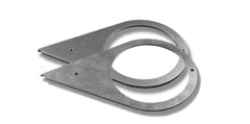
Figure 1. Shims
Shims used for precise spacing or leveling in machinery, automotive applications, or aerospace industries.
-
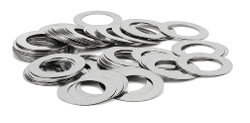
Figure 2. Washers
Washers are used as spacers, load distributors, or to reduce friction in various mechanical assemblies.
-

Figure 3. Springs
Thin metal springs are utilized in a wide range of products, from simple toys to complex mechanical systems, to store and release mechanical energy.
-
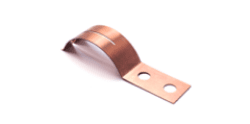
Figure 4. Electrical Contacts
Thin metal springs are utilized in a wide range of products, from simple toys to complex mechanical systems, to store and release mechanical energy.
-

Figure 5. Blades
Thin metal blades are commonly used in cutting applications, such as surgical scalpels, utility knives, and various industrial cutting tools.
-
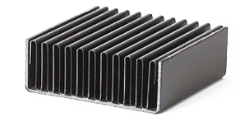
Figure 6. Heat Sinks
Heat sinks are used in electronic devices to dissipate heat and maintain optimal operating temperatures.
-

Figure 7. Filaments
Thin metal filaments, often made from materials like tungsten or nichrome, are used in incandescent light bulbs, heating elements, and 3D printers.
-
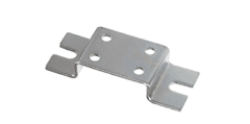
Figure 8. Stamping and embossing components
Thin metal parts are used in the manufacturing of stamped metal products or embossed surfaces, such as credit cards and nameplates.
-

Figure 9. Microelectromechanical Systems (MEMS)
MEMS devices often incorporate thin metal components for various micro-scale applications, such as sensors and actuators.
ADVANTAGES OF THIN METAL PARTS
• They are lightweight compared to their thicker counterparts, making them suitable for applications where weight reduction is essential.
• They are more flexible than thicker metal components. This allows them to bend and conform to various shapes and surfaces, making them ideal for applications that require intricate designs or complex geometries.
• They have a higher surface area-to-volume ratio, which enhances their ability to dissipate heat quickly.
• They generally require less raw material and energy consumption compared to thicker parts. This can result in cost savings during the production process and transportation.
• Despite their thinness, many metal alloys have a high strength-to-weight ratio, meaning they can withstand considerable mechanical stress while still being lightweight.
• They can be stacked or nested closely together, allowing for space-saving in compact designs.
• The flexibility and formability of thin metal parts allow designers and engineers to explore creative and innovative designs that might not be feasible with thicker materials. This can lead to improved product performance and functionality.
• Using thin metal components can contribute to reducing overall material consumption and waste, making them more environmentally friendly compared to thicker metal components.
However, it’s important to note that thin metal parts may also have some limitations, such as reduced structural strength compared to thicker materials. Therefore, their selection should be based on the specific requirements and intended application to ensure optimal performance and durability.
DISADVANTAGES OF THIN METAL PARTS
Thin metal parts have several disadvantages, which can vary depending on the specific application and context. Some common disadvantages include:
Thinner metals may not be able to handle high temperatures as effectively as thicker ones, leading to thermal deformation or even melting under extreme conditions.
Fabrication can be challenging due to their reduced thickness, making them more susceptible to warping, bending, or even tearing during manufacturing processes like cutting, stamping, or welding.
They may have a shorter lifespan compared to thicker alternatives, especially in high-wear or high-stress applications, due to the increased likelihood of fatigue failure or mechanical wear.
They may lack the ability to dampen vibrations or absorb acoustic energy effectively, potentially leading to unwanted noise or vibration issues in certain applications.
They are generally weaker and more susceptible to deformation or failure under stress compared to thicker counterparts.
They typically have less protective surface area, making them more prone to corrosion and degradation over time.
They can be more expensive compared to thicker ones, as it may require more precise equipment, specialized processes, and higher-quality materials to maintain integrity and performance.
They may have reduced electrical conductivity due to their thinner cross-sectional area, impacting their efficiency in electrical applications.
Achieving smooth surface finishes on thin metal parts can be more difficult, leading to potential issues with surface imperfections, roughness, or unevenness.
THIN METAL PARTS FABRICATION
Several methods are employed to fabricate thin metal parts, each offering unique advantages depending on the required dimensions, material properties, and budget constraints. The most common fabrication methods are:
a. Stamping and Punching: Stamping and punching processes involve using specialized dies and presses to cut and form metal sheets into the desired shape. These methods are suitable for high-volume production and are cost-effective.
b. Photochemical Etching: Also known as chemical milling or chemical etching, this process uses chemicals to selectively remove metal from a sheet, leaving behind the desired pattern. It is ideal for complex and intricate designs with high precision and can handle various metal types.
c. Laser Cutting: Laser cutting employs a high-energy laser beam to precisely cut through metal sheets. This method is fast, accurate, and suitable for a wide range of materials and thicknesses. This method is our specialty, do not hesitate in requesting a quote.
d. Hydroforming: Hydroforming uses high-pressure fluid to shape metal sheets into complex geometries. It offers design flexibility and eliminates the need for multiple parts and assembly processes.
WHAT ARE THE ADVANTAGES?
i. Stamping and Punching:
• High-speed production rates suitable for mass production.
• Low tooling costs for simple designs.
• Precise and consistent results with good dimensional accuracy.
ii. Photochemical Etching:
• High precision and tight tolerances for intricate patterns.
• No mechanical force, reducing the risk of material distortion.
• Suitable for thin, delicate materials and complex designs.
iii. Laser Cutting:
• High precision and accuracy with minimal material waste.
• No tooling required, enabling rapid prototyping and customization.
• Suitable for a wide range of metals, including magnetic and non-magnetic.
iv. Hydroforming:
• Complex shapes can be achieved with reduced tooling and assembly.
• Uniform material distribution, resulting in enhanced mechanical properties.
• Suitable for materials with varying thicknesses and ductility.
THE FUTURE OF THIN METAL PARTS
Miniaturization: The trend of miniaturization was predicted to continue, with thin metal parts becoming even smaller and more intricate.
Lightweight materials: Thin metal parts are ideal for applications where weight reduction is crucial, such as aerospace, automotive, and consumer electronics industries. The future was expected to witness the development of new lightweight alloys and composite materials, which would further enhance the performance and efficiency of thin metal components.
Sustainability and recyclability: With an increased focus on sustainability and environmental responsibility, there was an expectation for the development of eco-friendly metal materials and manufacturing processes. Efforts towards recycling and reusing thin metal parts were likely to grow.
Enhanced surface properties: Surface treatments and coatings were expected to be developed further to improve the durability, corrosion resistance, and other functional properties of thin metal components.
Additive Manufacturing (3D printing): 3D printing, especially with metal materials, was projected to play a significant role in the future of thin metal parts. Additive manufacturing allows for more complex designs, rapid prototyping, and reduced material waste, which can be especially beneficial for creating thin, intricate metal parts.
Integration with electronics: Thin metal components have applications in the electronics industry, from flexible circuit boards to antennas and sensors. As electronic devices become smaller and more interconnected, the demand for thin metal components that can integrate with these technologies was expected to increase.
Advancements in fabrication techniques: Traditional fabrication methods like stamping and laser cutting were likely to see advancements, leading to higher production efficiency and reduced costs for manufacturing thin metal parts.
Medical applications: Thin metal parts are used in various medical devices and equipment. As medical technology advances, there were anticipated developments in materials and manufacturing processes to meet the specific requirements of medical applications, such as biocompatibility and sterilizability.
Stencils Unlimited manufactures a wide variety of metals parts. For a custom quote please email us your CAD files to support@stencilsunlimited.com or fill out our CUSTOM QUOTE FORM. We will email you a quote within 24 hours.
Here are some examples of the thin metal parts we are able to fabricate at stencils unlimited:
-

Custom thin metal part in 0.003” thick stainless steel
-
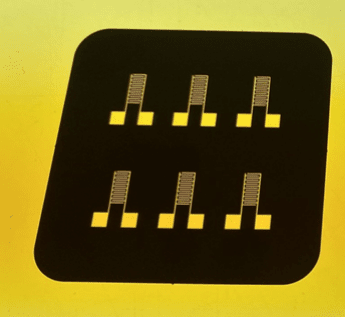
Shadow masks with interdigitated electrodes for sensor fabrication
-
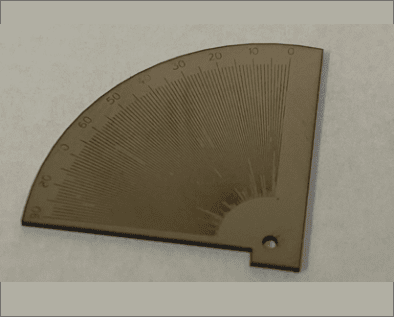
Custom laser engraved tool for angle measurements
-

Custom thin metal parts in 0.008” thick stainless steel
-
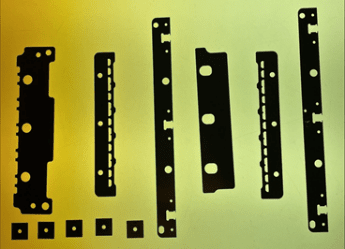
Custom metal shims for complex machines in 0.020” thick stainless steel